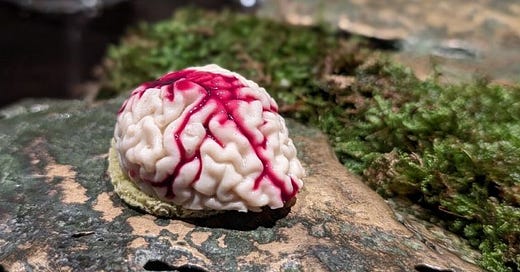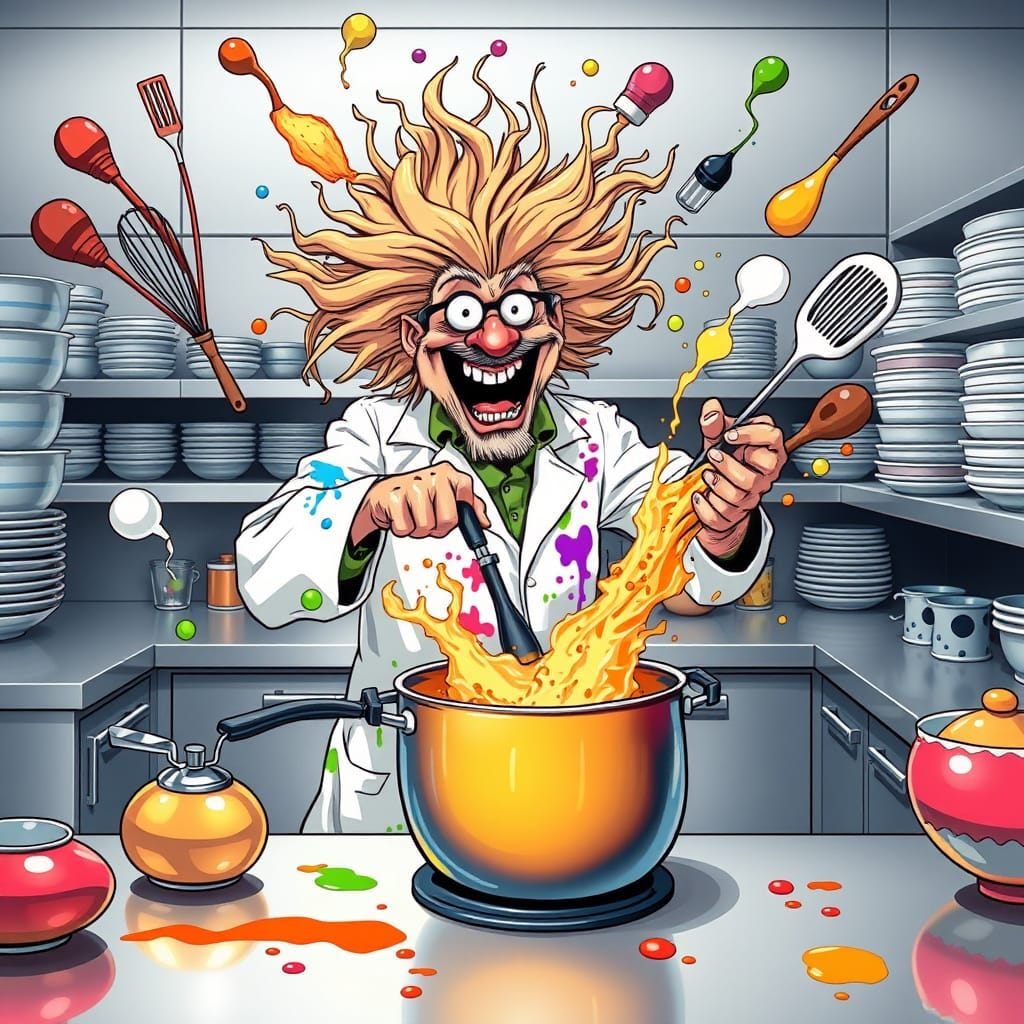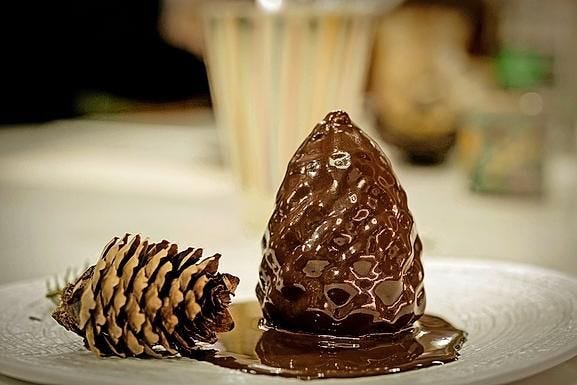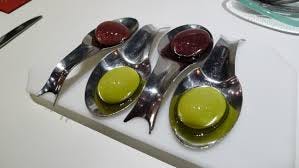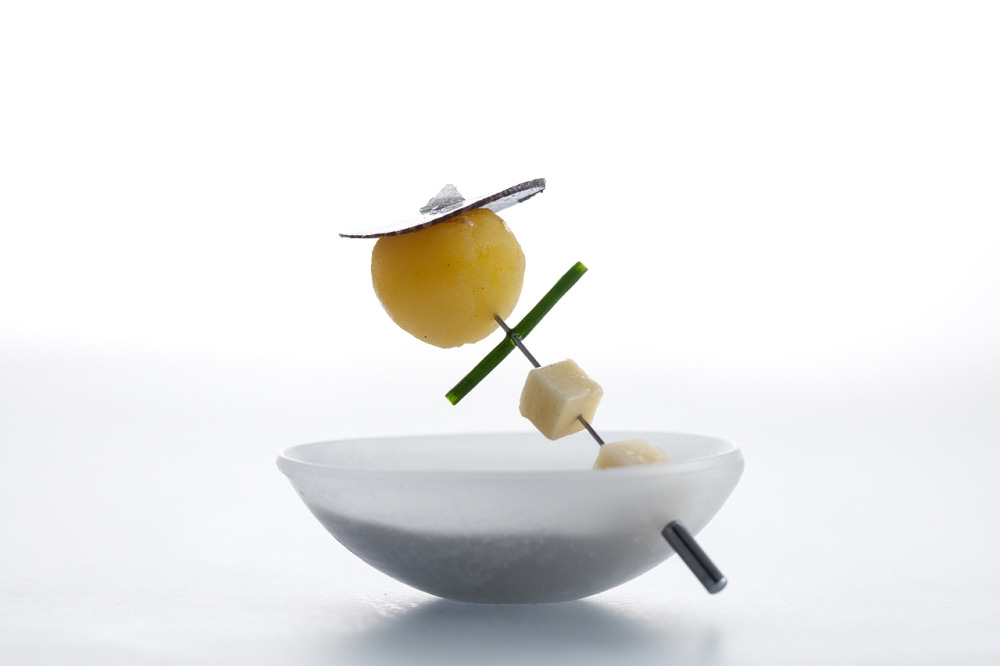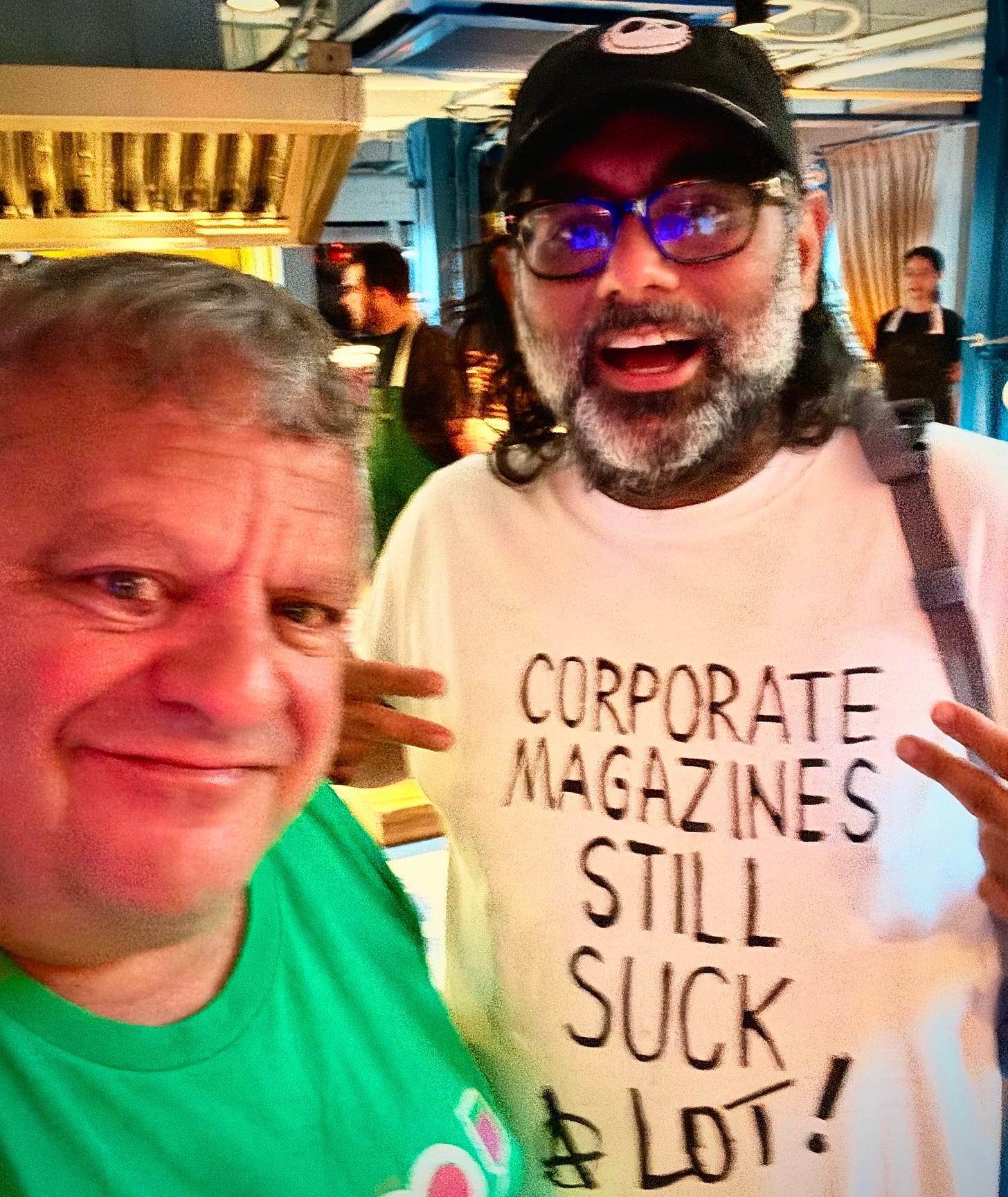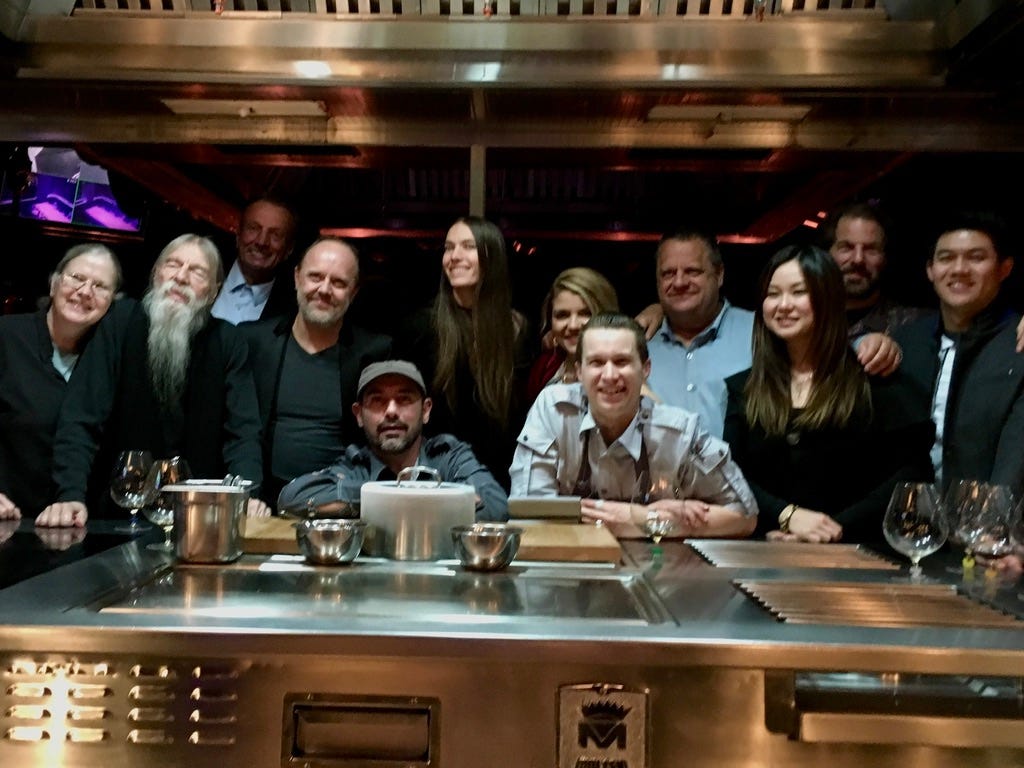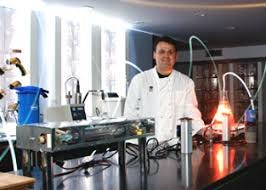Molecular Gastronomy - What a long strange road it has been repelete with triumph, despair and even suicide. As the dust settles - Where do we stand? Well, let’s start with this wonderful description from a restaurant supply store (who benefit when you buy their MG equipment):
Molecular gastronomy is a branch of food science that focuses on the physical and chemical processes that arise when cooking. These processes and interactions are explored and manipulated to yield flavorful, functional, and artistic results.Oct 7, 2019 - Webstaurant Store.
It began somewhere around 1994 with Marc Veyrat and some say ended in 2011 with the closure of El Bulli. But wait! The number one Restaurant in the world, this year according to World’s 50 best is Disfrutar, Barcelona run by three Molecular disciples from El Bulli. And the #1 restaurant in Asia is Gaggan who is another Molecular Gastronomer disciple of El Bulli. Let’s go back to where it all began.
History of Molecular Gastronomy
Food science has always been focussed on ingredient composition until 1988 when Herve This, a French physical chemist, and Nicholas Kurti, a Hungarian professor of physics at University of Oxford, shifted the focus to transformations that occur during culinary processes for home and restaurant cooking, This was then advanced by the writer - Harold McGee. He was known as a “food Scientist and wrote the seminal book On Food And Cooking: The Science And Lore Of The Kitchen in 1984.
All of this converged at a legendary workshop attended by Ferran Adria in Biarritz in 1995, when he attended lectures on physics and chemistry in gastronomy led by French scientist Hervé This.
This history of MG post from Joerg Zipprick at Gastronomy Unbound is essential reading.
Ingredients Culinary Institue of Barcelona
calcium alginate, calcium chloride, agar-agar, thickeners and gelling agents, gelatines, raising agents, emulsifiers and carbonated sugar. These ingredients are used to create a wide variety of effects, such as the formation of liquid spheres, gels, foams and other surprising textures.
Calcium alginate is a natural polymer obtained from seaweed and is commonly used in the food industry as a thickener, stabilizer and gelling agent.
Calcium chloride is a white, water-soluble salt used in a variety of applications, including the manufacture of chemicals, such as polyvinyl chloride, as a cooling and de-icing agent, in construction as a drying agent and also as a food additive.
Agar-agar is a type of gelatin obtained from seaweed and is used as a thickening and stabilizing agent in food processing and pharmaceuticals. It is commonly used in cooking as a vegetarian and vegan substitute for animal-based gelatin.
Thickeners and gelling agents are used to modify the texture of foods and create unusual shapes. Thickeners are used to make sauces and other liquids thicker, while gelling agents are used to turn liquids into gels and hold them in shape. Common examples of thickeners and gelling agents are xanthan gum, guar gum, agar agar and gelatin
Gelatines are a basic ingredient to create unconventional textures and shapes out of food. Gelatin is mixed with other ingredients such as juices, purees, sauces and liquid foods, and allowed to solidify. This focus on texture and shape has revolutionized the way food is presented in the kitchen.
Raising agents are chemicals used to create bubbles and foams in dishes. These products can be natural or synthetic and are used to give food a different appearance and improve their texture. Some common examples of raising agents are baking soda and citric acid, which react with other ingredients to produce bubbles and foams. In molecular cuisine, raising agents are used to create unique and surprising textures and to improve presentation.
Emulsifiers are chemicals or natural ingredients used to stabilize emulsions, i.e., to maintain homogeneous mixtures of immiscible liquids, such as oil and water. In molecular cooking, emulsifiers are used to generate smooth and creamy textures, as well as improve the presentation and consistency of foods. Common examples of emulsifiers are lecithin, xanthan gum and gum arabic. These products are used in combination with other ingredients to create stable emulsions with interesting textures.
Carbonated sugar is known for its high carbon dioxide content. It is a fine, crystalline powder that is used to make carbonated beverages to give them a sweet taste and increase their fizz. When mixed with water and other ingredients, the carbon dioxide is released and creates bubbles, which give the beverages their characteristic fizzy sensation and flavor. In addition to its use in beverages, carbonated sugar is also used to make some desserts and to create smooth, bubbly textures.
Spherification technique, originated in the food industry in 1946 by William J.M. Peschardt for Unilever, was perfected and popularised by renowned chef Ferran Adrià at El Bulli restaurant in the 2000s.
The equipment? Not sure what any of this is but includes: Syringe, UV light torch, Giant ice ball maker, piping bags, Mini whisk frother, smoking gun, molecular spaghetti kit and collecting spoon, 1/2 sphere molds spherification bottles etc…
And here is a very rough chronology of what the pioneers made:
Marc Veyrat at La Ferme de Mon Pere - Background: Self taught - Signature dish: Chocolate Pine Cone (1994)
When my wife, Maria and I were standing in the El Bulli kitchen we asked Feran Adria who was his biggest influence? He cited Marc Vey rat who practically invented gourmet foraging and pioneered Molecular Gastronomy: Rather than using butter, flour, eggs, oil, or cream, he instead uses roots, mountain plants, mountain herbs, and wild flowers harvested in the French Alps. Here is one of his desserts combining foraging with Molecular:
Ferran Adria @ El Bulli - Liquid Olives (2005) - Spherification - The jellification of a liquid – transforming it into a sphere with a thin gel membrane was likely the single most famous and influential dish from El Bulli (along with 1850 others).
Heston was always in oursuit of perfection. This dish helped him gain his 1st star. I went frequently and think Fat Duck might have peaked at 2 stars. By the time 3 stars rolled around he allowed diners to replace the snails with mushrooms. Today it is considered a musem more than a restaurant - but - although it no longer breaks new ground - it remains a fascinating and delicious museum tour!
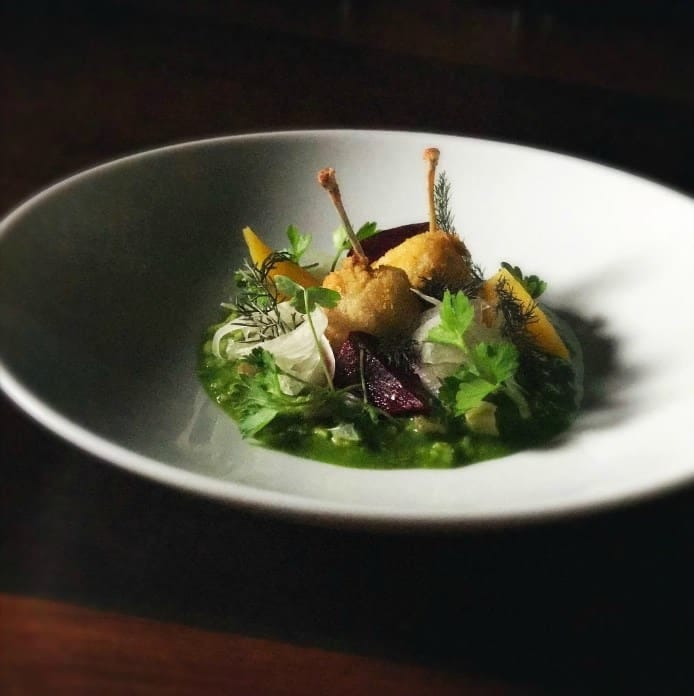
Grant Aschatz at Alinea - Back ground: Charlie Trotters, French Laundry, Trio, Alinea (2005): Signature Dish: Hot Potato - Cold Potato:
An anecdote about this mega talented chef is that he lost his sense of taste due to a bout of cancer. Like a piano player with no fingers. After intense radiation treatment - he beat back the disease and in the process developed new flavor profiles that were sourced from his palate misery.
Here is Grant’s famous eating a balloon video
Wylie Dufresne at WD50 NYC- Background: Jean George - Signature dish: Carrot Coconut Sunnyside Up:
An American chef who plugged into the glory days of Molecular Gastronomy opening his resdtaurant in 2004 and closing along with the others in 2014
Gaggan Anand at Anand Bangkok - Background: Drummer, El Bulli - Signature dish: Lick it up:
Gaggan is a roaring force of nature and PR supremo who descended from his stage at El Bulli in 2010 to open his Molecular Gastronomy tribute to Indian cooking. After various iterations of his restaurant rattled around the top 10 of Worlds 50 Best lists ever since with his emoji only menu and plate licking signature. This year - he achieved #1 on the Asia 50 Best list.
Rat brain is typical Gaggan:
We set out together in search of zero-mile products near the restaurant. At one point, we uncovered a trapdoor and what did we find? Lots of rats! It was at the time of the lockdown, when people were mostly shut indoors. We realized that rats had taken over the city. They were in the streets, in the trees, everywhere. That's when we came up with the idea: we caught a good number of them and first of all we sent them to a kind of spa for 15 days, they got manicures and pedicures. Already after this period they no longer looked like rats, rather like refined mice. Then, for a further 21 days, we fed them the best of delicacies, the best of the best; we made them swallow (by force, actually) a soup with onions, garlic and herbs. They drank good whiskey. At that point they were ready to be cooked. Now I can offer you the most sustainable meat dish there can be in Bangkok: rat meat! Their brains, then, are a real treat.
Paul Pairet at Ultraviolet Shanghai: Background: France, Istanbul, Hong Kong, Sydney, and Jakarta - Signature dish: Truffle Burnt Soup Bread
One of a kind restaurant experience described by Amy Fabris-Shi in October 2012:
Pairet's theory of “psycho-taste”, or the psychology and emotions associated with food. He believes that our perception of taste can be altered through engaging different senses and emotional triggers as we eat, and has been quoted as saying “Food is ultimately about emotion, and emotion goes beyond taste.”
And here I got seated with my daughter Jennifer and the drummer from Metallica = Lars Ulrich - and his family:
Mateu Casañas, Oriol Castro and Eduard Xatruch at Disfrutar: Signature dish: Panchino (Chinese Bread) filled with caviar and sour cream (2016)
The Molecular Gastronomy legacy of El Bulli is most directly carried on at Disfrutar which was recently crowned the best restaurant in the world by W50 Best Restaurants. If you missed the chance to dine at El Bulli - well - this is your next best option. The three chefs worked for 16 years together at El Bulli - and like El Bulli, the team creates, records and serves dishes that you have never seen before. It is a stunning and dizzying kaleidoscope of flavors, textures, colors and temperatures that will simply blow your mind.
This video by Alexander the Guest is essential viewing for those who love Molecular Gastronomy and would like to learn about the three crown princes of the discipline. It is interesting to hear his conclusion of - by the end - being overwhelmed. For XtremeFoodies this is nirvana.
Homaro Cantu at Moto Chicago - Signature dish: The menu itself - How a homeless child grew up to become the most inventive chef in history.
This article describes a man who was possibly the greatest Molecular Gastronomer you have never heard of. When My wife and I sat down at the table - he handed us a menu and we finished reading it - he then instructed us to eat it. And then came this:
A plate apparently splattered with roadkill. As you balked at the sight of the gore and guts… that was just what the chef wanted. The dish was designed to look repulsive but taste delicious. The gristle was made from confit duck and the blood from juniper berry sauce. Thank God for that.
Gaggan’s rat brains owe a debt to Cantu. His name has faded into the past but - like Jimi Hendrix - he died when he was just getting started. Alinea group ended up buying the restaurant from his widow.
On a happier note here are the Easter Eggs behind the Paywall below: 1. Most exciting restaurant in history 2. The best unknown Molecular Gastronomy restaurant in the world and 3. A brilliant video on the pre-history of Molecular Gastronomy. All the good stuff is above but..nerds will like what is below.
Read about The Miracle of ElBulli in my Substack from earlier this year
Keep reading with a 7-day free trial
Subscribe to Xtreme Foodies to keep reading this post and get 7 days of free access to the full post archives.


